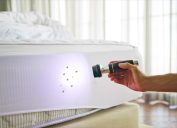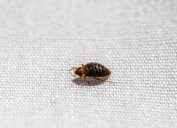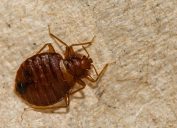How to Get Rid of Bed Bugs the Easiest Way Possible
Pest control professionals share their best tips to help you tackle a potential infestation.
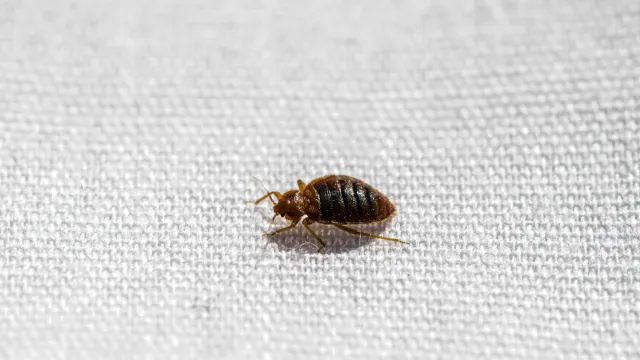
At the bare minimum, sleeping tight means not letting the bed bugs bite. But when this pest finds its way into your home, it can cause a total takeover—leading to many sleepless nights instead. That's why it's important to get ahead of a bed bug infestation before it goes too far. Not sure where to start? We talked to different experts to get their advice on how to get rid of bed bugs for good. Read on for their guidance on the easiest way to rest easy again.
RELATED: 5 Things You're Buying That Bring Bed Bugs Into Your House, Experts Say.
What Are Bed Bugs?
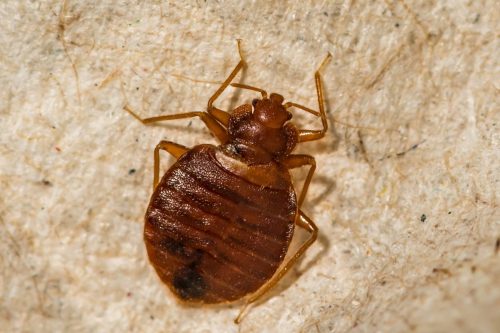
Scientifically known as Cimex lectularius, bed bugs are parasitic insects that feed on blood, according to the Centers for Disease Control and Prevention (CDC). They can be found across the globe, but have recently been spreading rapidly in parts of the U.S.
What Causes a Bed Bug Infestation?

Bed bugs are quick to spread, causing infestations wherever they go. But while many people only worry about picking up these pests in hotels, they can and will travel from many more places than that, Diana Ludwiczak, certified New York bed bug inspector and founder of Doctor Sniffs Bed Bug Dogs, warns.
"For instance, if you live in an apartment building and a neighboring unit has a bed bug issue, that in turn may cause you to to get bed bugs," she says. "You can also pick up bed bugs from any public seats or other places where people sit."
RELATED: 8 Signs of a Bug Infestation You Should Never Ignore, Exterminators Say.
How Do I Check for Bed Bugs?
Before you can tackle an infestation, you have to know whether or not you actually have a bed bug problem. To help you check, follow these four tips to find out if your home is harboring bed bugs.
1. Learn what bed bugs look like.
Bed bugs are known for their reddish-brown color, Jim McHale, certified entomologist and CEO at JP McHale Pest Management, tells Best Life. They're also flat, wingless, and range in size from 1 millimeter to 7 millimeters, according to the CDC.
"Bed bugs are really small—just about the size of an apple seed," McHale confirms.
2. Check your skin.
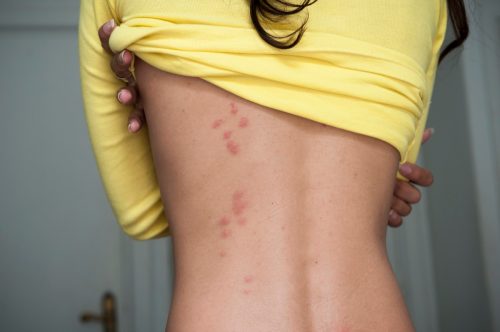
Since bed bugs feed on human blood, the CDC says "one of the easiest ways to identify a bed bug infestation is by the tell-tale bite marks" they leave on your skin while you're sleeping. These bites may show up on the face, beck, arms, hands, or any other body parts.
"The bite marks are similar to that of a mosquito or a flea—a slightly swollen and red area that may itch and be irritating," the agency adds. "The bite marks may be random or appear in a straight line."
3. Inspect your mattress.
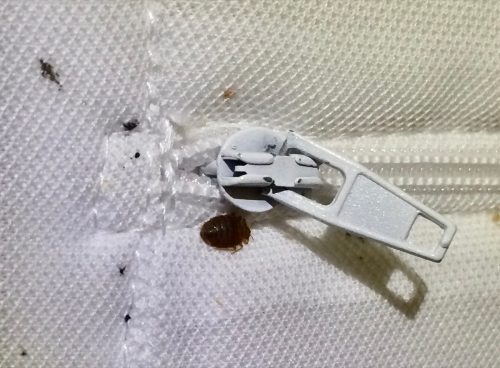
But not all people develop visible signs of bed bugs bites, so it's important to check for other clues to determine if you're facing an infestation. When they're not feeding, bed bugs often hide around your bed.
"They can be found near the piping, seams and tags of the mattress and box spring, and in cracks on the bed frame and headboard," the U.S. Environmental Protection agency (EPA) explains on its website.
4. Identify additional hiding places.
If you don't see bed bugs around your mattress, that doesn't necessarily mean you don't have an issue.
"Bed bugs hide in more than just bed frames and mattresses," McHale cautions.
He suggests also checking small cracks, crevices, skirting boards, and bedside cabinets. You should inspect seams, covers, and zips of sofas and chairs as well, alongside spots where the furniture meets walls and where doors are sealed.
And don't just be on the lookout for bugs themselves in these areas.
"Look for dark or black stains, possibly from bed bug excrement, as well as clustered fecal matter, which look like spilled pepper," McHale advises.
RELATED: These Smells Could Mean You Have Bed Bugs, Pest Experts Say.
How to Get Rid of Bed Bugs Fast
OK, so you've discovered signs of an infestation. What next? First, don't panic. Then, read on for seven ways you can quickly eliminate bed bugs from your home.
1. Vacuum absolutely everything.
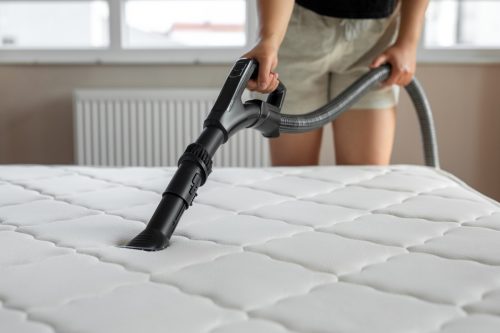
The first step Ludwiczak recommends when it comes to getting rid of bed bugs is to use your vacuum.
After you vacuum any and all areas where there might be bed bugs or eggs, don't forget to take further steps to prevent them from reemerging and spreading again.
"You need to make sure you empty the contents of the vacuum and seal it into a bag," she says. "Then, you'll want to place the vacuum into an airtight snap bin. This way your vacuum is isolated."
2. Use bed bug bed encasements.
You can also consider using bed bug encasements to stop this fast-spreading insect, according to Ludwiczak. These protective covers (which usually come in clear or light white) fit tightly over your mattress or pillows in order to trap and smoother bed bugs that are hiding on your bedding.
3. Attack them with heat.
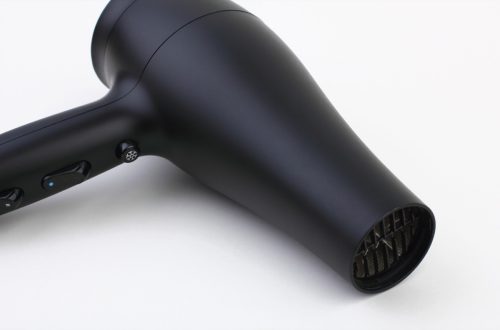
Bed bugs have a hard time with heat, so applying a heat treatment is another way you can kill them.
"They cannot survive temperatures above 120 degrees Fahrenheit," Shawn Gleason, PhD, seasoned entomologist and founder of Bugs Encyclopedia, explains.
To attack bed bugs with heat, you can use a clothes dryer on high heat, or use black plastic bags in a hot, closed car, according to the EPA.
However, "do not try to kill bed bugs by increasing your indoor temperature with a thermostat, propane space heater, or fireplace—this does not work and is dangerous," the agency warns.
4. Freeze them out.
If you find bed bugs hiding on items that are sensitive to heat, Allan Bossel, pest control expert and owner of Michigan Bed Bug Specialists, says you can consider a cold treatment instead.
"Opt to freeze them out by placing the items in a freezer set to 32 degrees Fahrenheit or lower for a minimum of four days," he recommends.
5. Use a steamer.
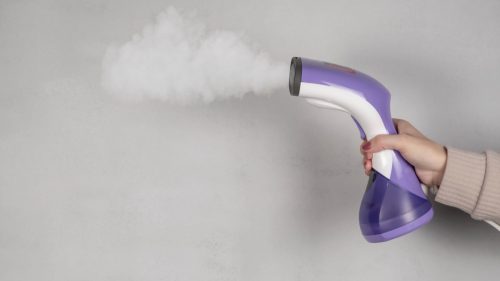
Wet or dry steam cleaners can be used to get rid of bed bugs in furniture, mattresses, or other potential hiding places, according to Bossel. Handheld steamers are especially useful at getting into tight cracks or corners.
"But ensure the steam's temperature reaches at least 160 degrees Fahrenheit to effectively kill bed bugs and their eggs," he says.
6. Use desiccants.

Using desiccants such as diatomaceous earth may also "dehydrate and kill bed bugs," Gleason notes. As Michel Johnson, pest control professional and founder of ciaobedbugs.com, further explains, diatomaceous earth is a natural substance that acts as a powerful weapon against bed bugs due to its abrasive quality.
"Here's how it works: When diatomaceous earth comes into contact with bed bugs, it causes damage to their outer shells, known as exoskeletons. Bed bugs rely on these shells for protection and to retain moisture," Johnson shares. "The tiny, sharp particles in diatomaceous earth create minuscule cuts and abrasions on the bed bugs' exoskeletons. This not only damages their protective layer, but also leads to dehydration."
7. Look into chemical insecticides.
Searching for something a bit stronger? According to the EPA, there are more than 300 chemical products registered for use against bed bugs—most of which can be used by the everyday consumer. But Johnson warns against trying to rely solely on chemical insecticides for your infestations, as bed bugs have been known to develop a "remarkable resistance" to many of the most commonly used chemicals.
"To make matters more challenging, bed bugs have developed a behavioral adaptation known as avoidance behavior," the expert adds. "When they detect the presence of certain chemical insecticides, they will actively avoid those areas. This means that even if you apply these chemicals, you might not be reaching all the hiding spots where bed bugs are lurking."
Do I Need to Invest in a Professional Bed Bug Treatment?
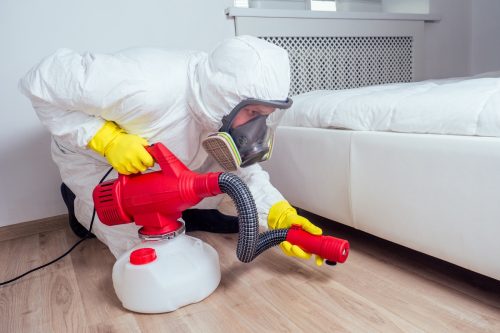
While do-it-yourself eradication attempts may end up being a viable solution, they aren't always effective at completely eradicating bed bugs from your home.
"Self-treating typically does not eliminate bugs at their source," McHale cautions. "Very often the problem spreads to other areas, making mitigation more complex."
When it comes to severe infestations, Bossel says it is best to seek out a pest control professional.
"Their expertise and access to specialized equipment can guarantee all bed bug and bed bug eggs are killed in the treated area," he explains.
But it's also important to consider how much money you have to spend on treatment. According to Johnson, the average price for a professional bed bug treatment is about $1,500.
"The price will vary with the size of the house treated, the extent of the infestation, and the state you live in mostly," he says.
RELATED: 7 Easy-to-Miss Signs You Have Bed Bugs, Experts Say.
Popular Myths About Bed Bugs
There is a lot of lore out there about bed bugs—especially about how they they spread, and what it takes to get rid of them. But not all of it is true. Here are five popular myths about bed bugs that need to be debunked.
1. You'll need to throw away everything you own.

Many people think that the only way to truly get rid of bed bugs is to toss out all their belongings. But this is a common misconception, according to Johnson.
"This extreme measure can be emotionally and financially taxing," he says. "The truth is, while decluttering can help, it's rarely necessary to discard everything. Effective treatments, like heat treatments and targeted pesticide applications, can eliminate bed bugs from your belongings without the need for drastic measures—saving you from unnecessary losses."
2. Bed bugs only infect dirty homes.
If you get caught with bed bugs, some might assume that your home must be dirty. But it's another myth that "bed bugs are a sign of poor hygiene," according to Johnson.
"The reality is, bed bugs are equal-opportunity pests and can infest any home, regardless of its cleanliness. They're more attracted to human hosts for blood meals than they are to dirt," he explains. "So, even if your home is spotless, you're not immune to a bed bug infestation."
3. Bed bugs won't infest foam mattresses.
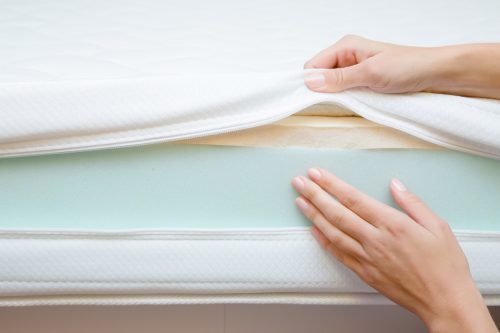
It's also commonly believed that foam mattresses are safe from bed bug infestations because of their dense structure, Johnson notes. But this isn't true either.
"Bed bugs are resourceful pests and can find their way into foam mattresses just as easily as other types," Johnson says. "While foam mattresses may offer fewer hiding spots, they're still susceptible to infestations. That's why it's crucial to remain vigilant and take preventive measures, regardless of your mattress type."
4. Bed bugs only travel on clothes or other fabrics.
Bed bugs can certainly hitch a ride on clothes or fabrics, but this is hardly their only mode of transportation.
"These pests can crawl on various surfaces, including wood, plastic, and metal. They're also capable of covering significant distances to find new hiding spots," Johnson warns. "So, it's important to inspect and treat all potential hiding spots during an infestation, including furniture, luggage, and electronics."
5. After treatment they'll be gone for good.
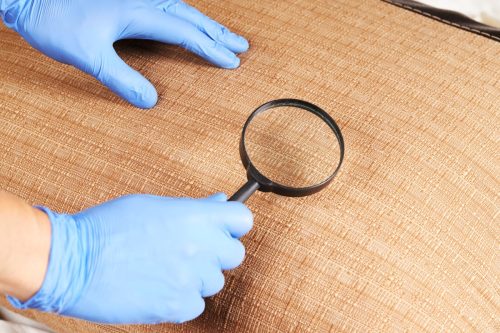
While optimistic, the idea that a singular treatment will mean the permanent end to bed bugs in your space is also a myth. Unfortunately, that is usually not the case.
"Bed bug treatments often require multiple applications and ongoing monitoring to ensure complete eradication. These pests are resilient and can develop resistance to pesticides over time," Johnson says. "That's why professional extermination services use a combination of methods, like heat treatments and insecticides, to effectively eliminate bed bugs and prevent their return. It's crucial to remain vigilant and proactive in preventing future infestations even after treatment."
RELATED: Widespread Bed Bug Infestation Wreaks Havoc on Paris—Could It Happen Here?
What Can I Do to Prevent Bed Bugs From Coming Back?
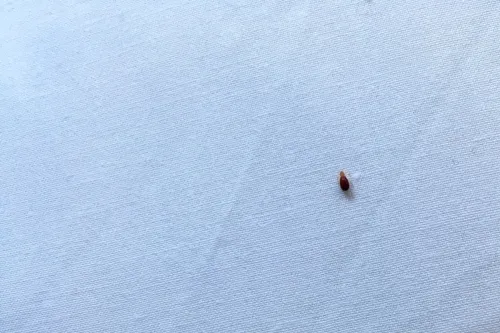
Once you do get rid of bed bugs, it is likely not a battle you want to ever fight again. But that means you'll have to put some extra effort in to prevent bed bugs from coming back.
To do so, you should continue monitoring the infested area and keeping your place tidy. Seal up any cracks, baseboards, or sockets, too, "as bed bugs are leaky creatures that can slip through the tiniest of openings," Johnson notes.
You should also consider investing in bed bug encasements as a preventative measure.
"The covers can act as a barrier, preventing bed bugs from infesting your sleeping areas," he explains. "Interceptors placed under the legs of your bed can also help trap any bed bugs trying to climb up, stopping them in their tracks."
The final step you need to take to prevent bed bugs from coming back is to be aware of the risks when traveling, which can increase your chances of encountering this troublesome pest.
"You should be cautious when staying in hotels or other accommodations, inspecting bedding and furniture for signs of infestation," Johnson advises.
Then, when you return home from traveling, there are certain measures you'll need to take as well—especially if you believe you were exposed to bed bugs.
"Unpack your luggage outside or in a separate area, and wash your clothes and belongings at high temperatures to kill any hitchhiking bed bugs," the expert recommends.
Wrapping Up
That's it for our guide on how to get rid of bed bugs in the easiest way possible, but be sure to check back with us soon for more pest tips.
- Source: CDC: Bed Bug FAQs
- Source: EPA: How to Find Bed Bugs
- Source: EPA: Pesticides to Control Bed Bugs
